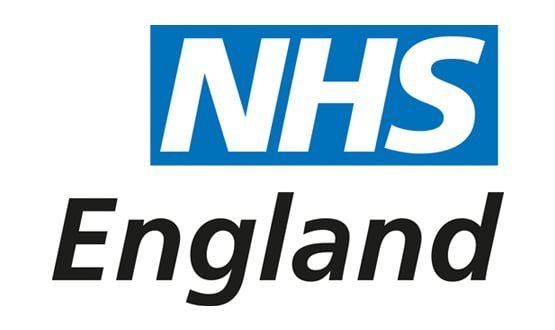NHS England has educated NHS trusts and ICBs of its document of seven short-term digital priorities, all centered on secondary care and elective restoration, with a watch mounted firmly on the following Regular Election.
The so-called 6+1 priorities, issued in June with minimal advance uncover or session, cowl strictly short-term targets that NHS England considerably improbably says is perhaps deployed a light-weight tempo, some in a matter of months, sooner than the following Regular Election, anticipated in autumn 2024.
The first priority is Good System Administration, described as rollout and optimisation of ICS diploma dashboards to help functionality administration and care planning. Some 50% of ICSs are said to so far have these capabilities in place.
Kent and Medway ICB is acknowledged in briefing provides seen by Digital Nicely being Data as having benefitted from using Good System Administration to reinforce real-time operational administration of ambulance handover delays and discharge. No timetable is given for deployment.
The second priority is Digital Mattress and Functionality Administration (EBCM), centered on roll-out all through acute trusts enabling reside, real-time information on mattress standing and affected individual transfer. In keeping with NHS England 56% of beds so far have EBMS.
The steering says that Maidstone and Tunbridge Wells perception observed a 45% low cost in affected individual change situations on account of introducing EBCMS, gaining 2258 hours of nursing time month-to-month. No sources are cited for the claimed benefits.
The briefing provides advocate EBCM is perhaps completely rolled out all through the NHS inside merely 5 months.
The third priority is Digitised Information and Workflow, in some other case typically known as Digital Affected individual Information (EPR), to help elevated productiveness, prime quality and safety.
NHS England claims ‘Productiveness has been elevated by as a lot as 13% in in all probability probably the most digitised trusts’. As soon as extra, no provide is cited for the claimed benefits.
The doc states that 88% of secondary care trusts have EPRs in place and that these is perhaps completely deployed in 18-24 months.
The fourth priority is Optimising Prepared Lists, described as ‘information pushed decision-making platforms optimising prepared document administration and bettering theatre productiveness’.
Chelsea and Westminster, which is called as a result of the reference case, is claimed to have seen theatre utilisation improved from 73% to 86% and a 56% low cost in cancellations.
Chelsea and Westminster has beforehand been named by NHS England as a reference web site for Palantir’s Foundry analytics platform beneath a pilot programme funded by NHS England.
NHS England’s briefing provides state it might probably take seven months to roll out a platform [thought to be Palantir] nationally to try to optimise prepared lists all through the nation.
The fifth priority is Dynamic Discharge, described as rolling out shared system digital devices to help multidisciplinary teams efficiently plan and observe hospital discharges.
One perception, NTHFT, is claimed to have seen a 25% enchancment in prolonged dimension preserve (21+ days) two months publish implementation. The briefing doc says there have been pilots in 12% of acute trusts by March 2023, and that the potential might very properly be deployed to all trusts in a credulity stretching timescale of merely 3 months.
The sixth priority is called as AI diagnostic help, described as accelerating rollout of promising AI imaging devices to chop again diagnostic backlogs, save clinicians time and speed-up remedy.
The doc names Musgrove Park as a result of the reference web site saying that AI-reporting of chest x-ray for detecting lung most cancers diminished the time to CT from 7 to 2.8 days. It goes on to say 28 of the 42 ICBs are using or testing in any case one AI Award product [funded by the former NHSX AI Lab].
The seventh, or plus one, priority is Affected individual Portals App Programme, described as enabling victims to take administration of their care by way of the NHS App along with managing appointments and accessing property to help greater care.
An un-named medium sized perception is claimed to have saved larger than £1m yearly monetary financial savings, larger affected individual satisfaction and 30% lower DNA figures when reserving appointments by way of affected individual portals. It goes on to say that 19% of acre non-specialist trusts have a affected individual portal.
NHS England is presently assessing bids for as a lot as £70m of funding in affected individual portals, whereas an extra £21m has not too way back been launched for AI funding, nonetheless particulars are unknown for any funding that may very well be made on the market for the alternative priority areas.
Commenting on the 6+1 priorities Paul Jones, vice-chair of the CIO Group and CDIO at Leeds Educating Hospitals NHS FT, said: “It’s unfortunate that after as soon as extra nationwide colleagues have jumped to a set of choices with out taking part with the doorway line and way more disappointing that the priorities don’t align with the challenges that the doorway line is coping with.
“That nationally we now have to fill the outlet for the 10-15% of acute trusts with out an EPR is clearly a clever initiative, I’m afraid the rest fall into the category of an assumption nationally that one-size matches all and that know-how is the reply, even once we’ve not labored out the problem.”
The reply is not always additional know-how, he suggested: “For bed-management, an important enchancment we might make isn’t know-how and is admittedly straightforward, it is to re-employ the clerical staff all through hospitals we’ve wanted to let go to deal with cost-constraints, a model new system, with out the employees to enter information in near precise time generally is a waste of money.”



